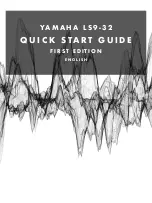
GRAVITAS INSTRUCTIONS
OVERVIEW:
Harmonic and/or standard tremolo, pure analog warmth.
This tremolo pedal features an all-analog
signal path that can do any variety or shape of standard volume modulation, harmonic tremolo (inspired by
vintage Brownface) or both simultaneously for a truly unique and beautiful tremolo sound that sits just perfectly in
a mix. The first thing your guitar hits in the signal path is a gorgeous, transparent, discrete class A clean boost
circuit, and is followed by buffering and tone shaping with famed Analog Devices AD823 opamps for perfect tonal
clarity, and analog warmth. Further, every knob and switch is connected to a little digital brain while your guitar
signal stays 100% analog the entire time and
never
gets digitally processed. Since the
control
of the effect is digital,
it opens up unprecedented effects and features that have never been heard or offered in analog stompboxes.
DRIVE (RAMP):
Simply put, this is a magical knob. When you don’t have any dip switches assigned for ramping,
this knob functions as a “Drive” control. “Drive” is a bit of a misnomer here, as it is the gain control of a very clean,
beautiful and transparent boost. If you want more headroom and output out of the pedal, 18V operation is advised.
Due to the digital
control
of this pedal, you can set this knob to control any of the five parameters individually or
simultaneously (volume, tone, rate, depth, sway) and have it either modulate or ramp-and-hold (rise or fall) via dip
switches in the back of the pedal. Essentially, this knob controls the ramp
time
in which this takes place. You can
even make a tremolo effect by choosing to modulate the volume knob.
VOLUME:
This is a little different than my other volume knobs. It should pretty much always be dimed, and then
set the level with the drive control. The main purpose of having this knob is so that you can set up a second
tremolo, and then adjust the depth of it.
TONE:
This is a very musical, and wide ranging tone knob. When the pedal is at noon, the pedal is transparent.
Clockwise for a brighter sound, and counter-clockwise for a smoother, mellow, dark sound. This circuit is also the
basis for the harmonic tremolo, as that effect is achieved by modulating between high and low pass filters.
RPM:
This controls the rate of the tremolo effect – can get super fast. Tap tempo overrides this control.
1 – 2 – 4 (3 – 6 – 8) (S – B – H) Toggle:
If the “Mode” dip switch is engaged, this toggle transforms into the “S – B –
H” switch. S = Standard Tremolo, H = Harmonic Tremolo, and B = both for standard and harmonic simultaneously.
I’m really happy with the how this turned out. Otherwise, this toggle controls tap divisions. A dip switch in the
back of the pedal lets you access the “3 – 6 – 8” divisions, rather than “1 – 2 – 4” if you so desire. You can also
select tap divisions for the RPM or for ramping parameters dependent on where the “tap control” dip switch is set.
Note that divisions are 2x slower for ramping.
DEPTH:
This controls the depth of the tremolo. Crank it clockwise for modulation going all the way to silence.
SWAY:
This controls the center point of the modulation. Crank it to counterclockwise, the wave is going to ramp
up quickly and ramp down gradually. If you crank it clockwise, the wave will ramp up gradually and ramp down
quickly. If this knob is straight up and down at 12:00 it will give a perfectly symmetric wave.
Left Wave Shape Toggle
: This controls the shape of the first half of the wave modulation. Left for sine, middle for
triangle, and right for square.
Right Wave Shape Toggle
: This controls the shape of the second half of the wave modulation. Left for square,
middle for triangle, and right for sine.
The depth, sway, and wave shape toggles comprise the ModuShape™ engine, which give unprecedented control over
the shape of your modulation.























